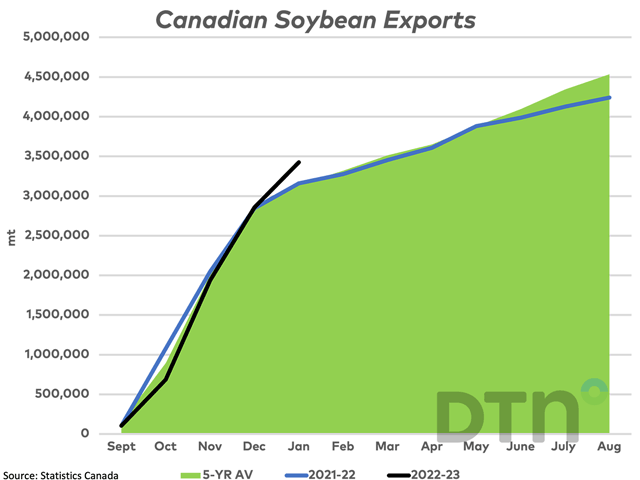
Canada's January soybean exports are reported at the lowest level seen in four months while cumulative exports are well ahead of the 2021-22 pace and the average pace of movement.

Canada's January soybean exports are reported at the lowest level seen in four months while cumulative exports are well ahead of the 2021-22 pace and the average pace of movement.
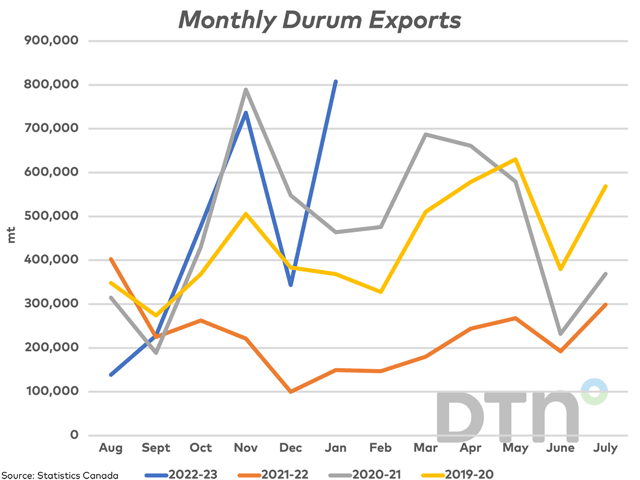
Canada exported 808,123 mt of durum in January. Exports volumes to the largest buyers are up, while shipments are seen to an increased list of importing nations.
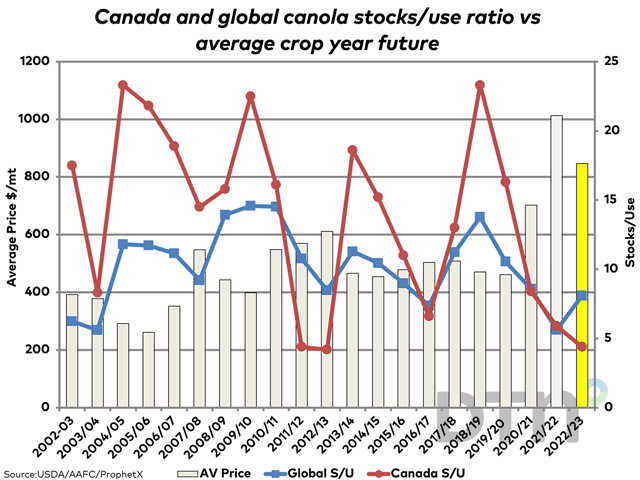
USDA revised their global rapeseed/canola production estimate higher this month, while their consumption estimate is being ratcheted higher at a slower pace.

The Canadian dollar has recently sent bearish signals, while the March 7 move resulted in the largest one-day drop in over four months against the United States dollar.
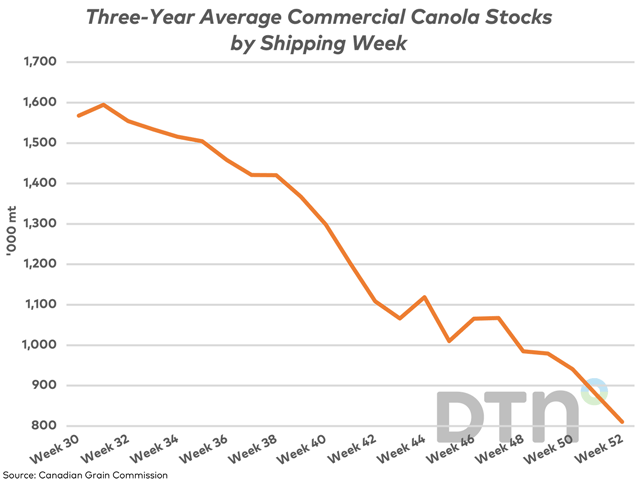
Commercial canola inventory as of week 30 is reported at the lowest for this week in nine years, while this volume tends to trend lower through the balance of the crop year.
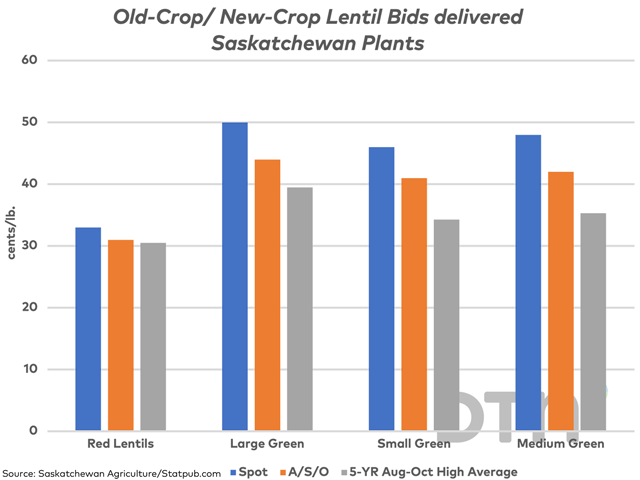
Prairie lentil bids were reported higher this week, while hot and dry conditions forecast for India is on the radar.
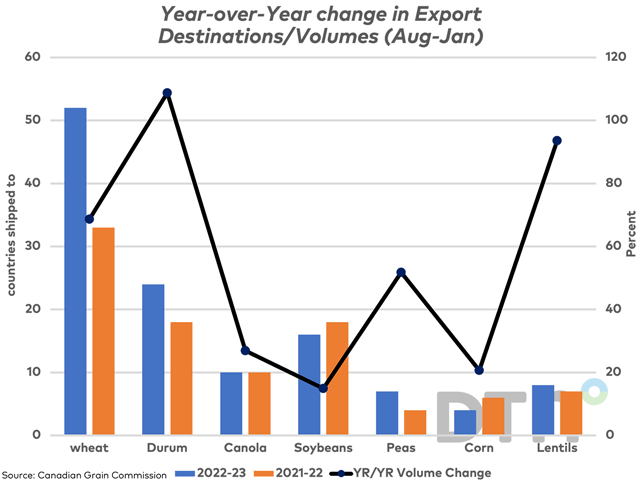
The Canadian Grain Commission's January Exports of Canadian Grain and Wheat Flour report shows a substantial increase in both volumes exported and the number of countries shipped to for several crops.
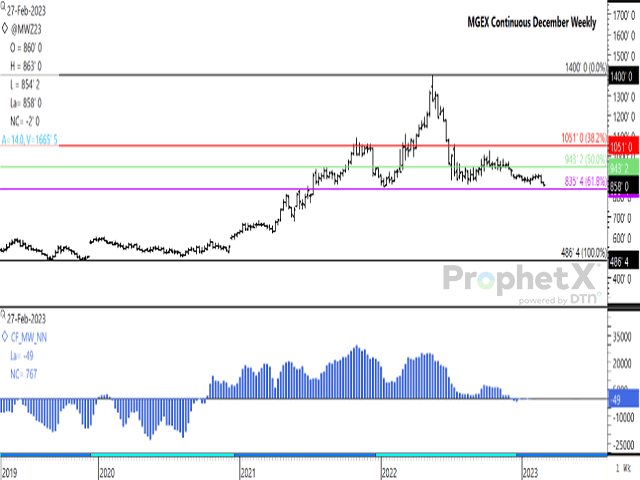
December 2023 MGEX spring wheat is reaching contract lows this week while holding just above 2022 lows.
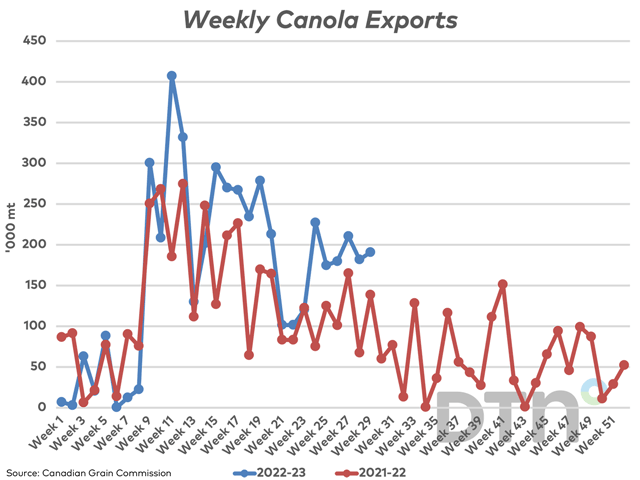
This study looks at canola exports as of week 29 and how they relate to the current government forecast.
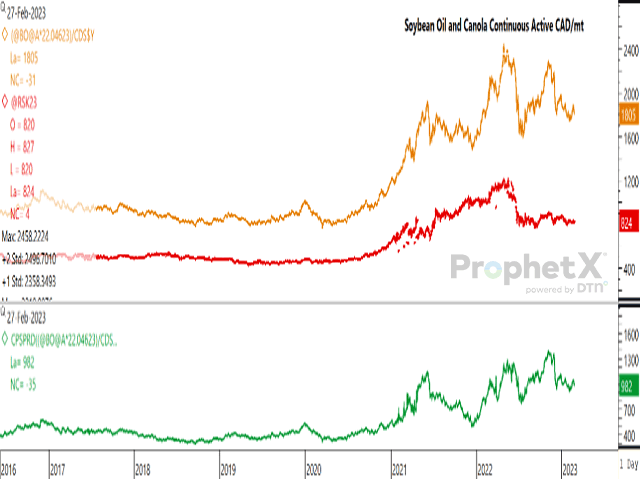
Canola diverged from losses realized in soybeans and soybean oil on Feb. 27 to close higher, despite Canadian dollar strength against the USD. Canola remains viewed as inexpensive relative to soybean oil, which may remain a supportive feature.
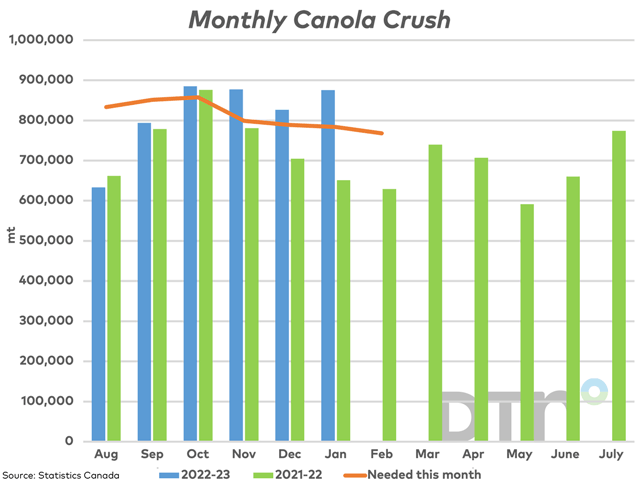
Canada's January canola crush was the third highest of the 2022-23 crop year, ahead of the steady pace needed to reach AAFC's current 9.5 mmt crush forecast.
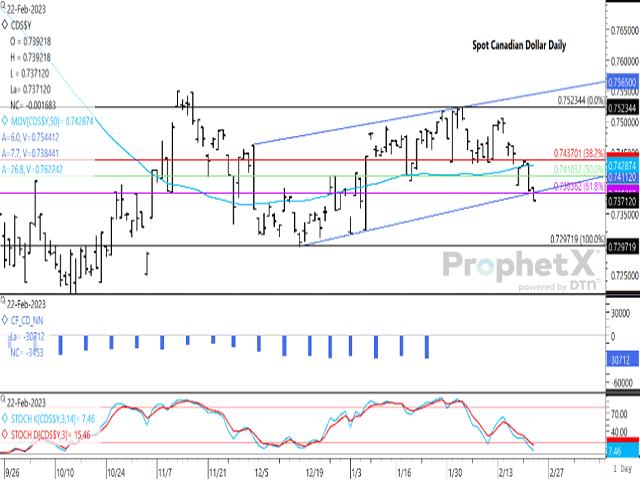
The Canadian dollar broke below chart support on Feb. 22, which could lead to a continued move to December lows.
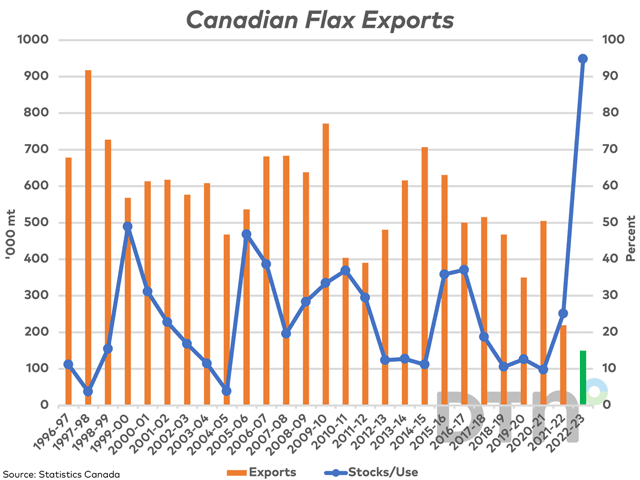
The most noticeable revision in AAFC's February supply and demand estimates was a sharp reduction in their forecast for Canada's flax exports in 2022-23, which could have significant implications for seeded acres in 2023.
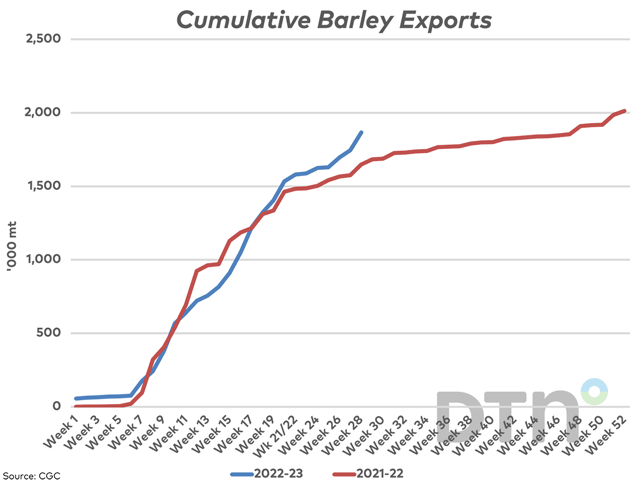
Week 28 barley exports are shown to jump higher, while the cumulative volume moved is ahead of the steady pace needed to reach the current export forecast.
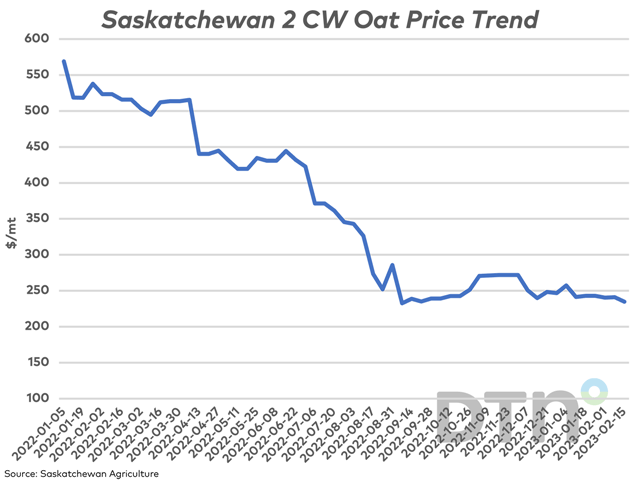
The weekly price of 2 CW oats reported by Saskatchewan is nearing a test of the harvest low, while there may be little to prevent a continued move lower.
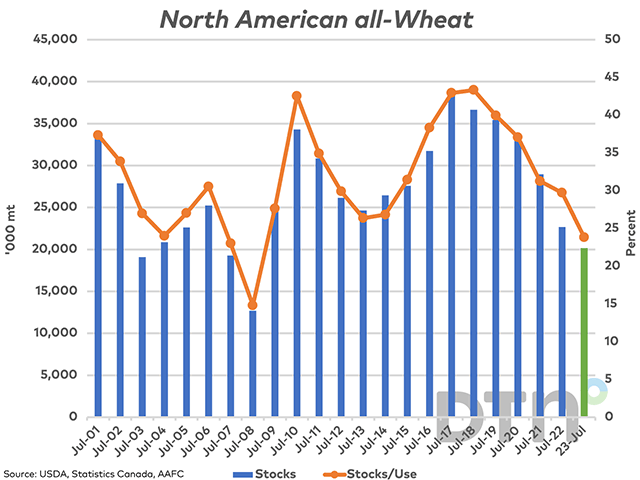
This study looks at the trend in combined Canada-U.S. wheat stocks over time.

India's Second Advance Estimates show an expected record foodgrains crop for 2022-23, which includes record pulse production.
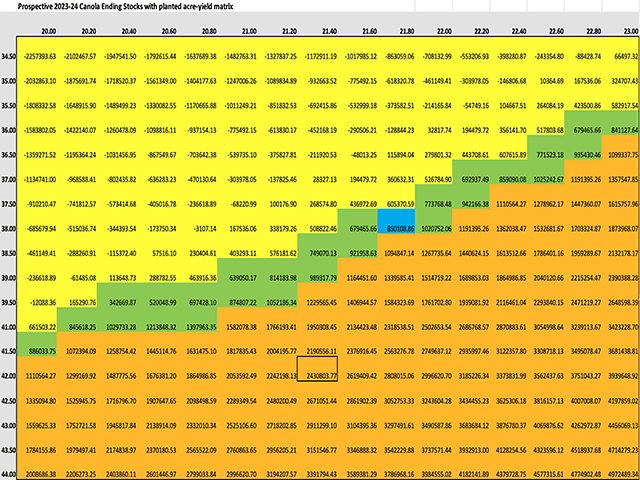
This study looks at the initial AAFC canola forecast for 2023-24 and looks at how ending stocks vary as yield and/or seeded acres change, leaving other assumptions constant.
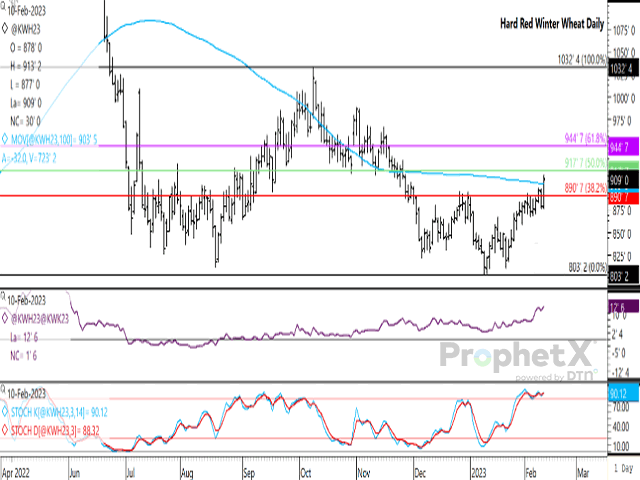
Heightened uncertainty in the Black Sea region led to a sharply higher close in wheat futures, led by the Kansas City hard red winter wheat contracts.
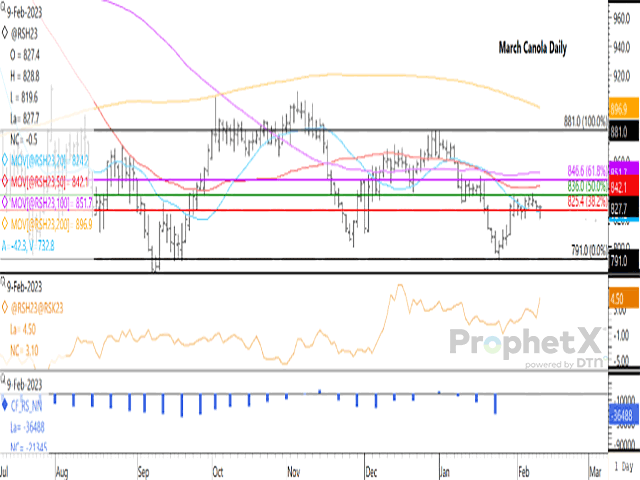
A recent failed test of resistance led to a test of the lower end of a short-term range traded for March canola. Both the March/May and the May/July spreads closed in inverted territory on Thursday.
DIM[2x3] LBL[blogs-canada-markets-list] SEL[[data-native-ad-target=articleList]] IDX[2] TMPL[news] T[]
DIM[2x3] LBL[blogs-canada-markets-list-2] SEL[[data-native-ad-target=articleList]] IDX[5] TMPL[news] T[]